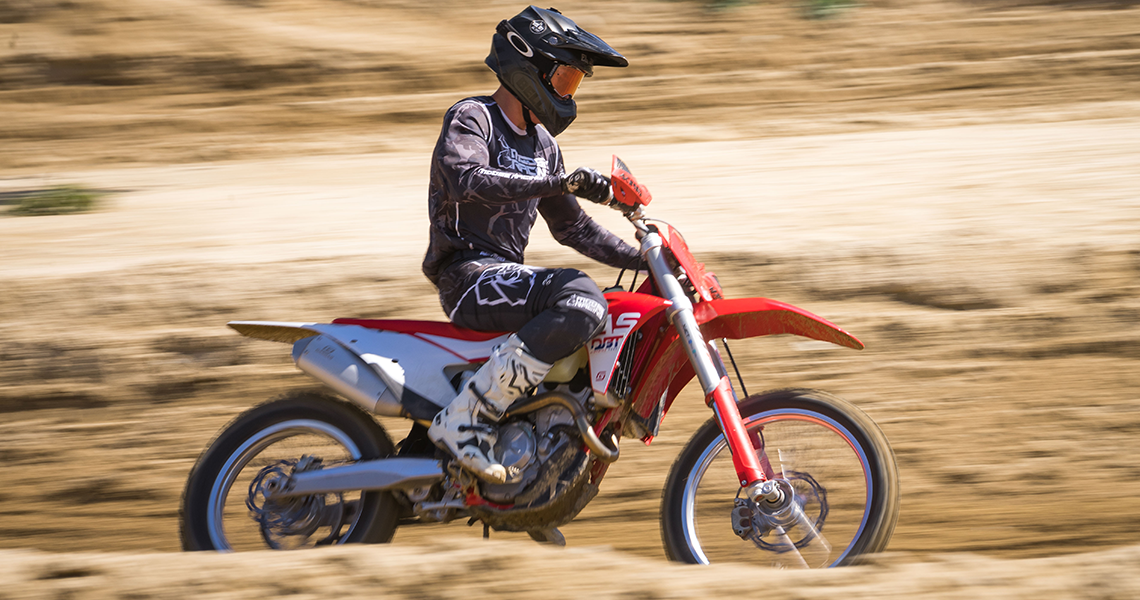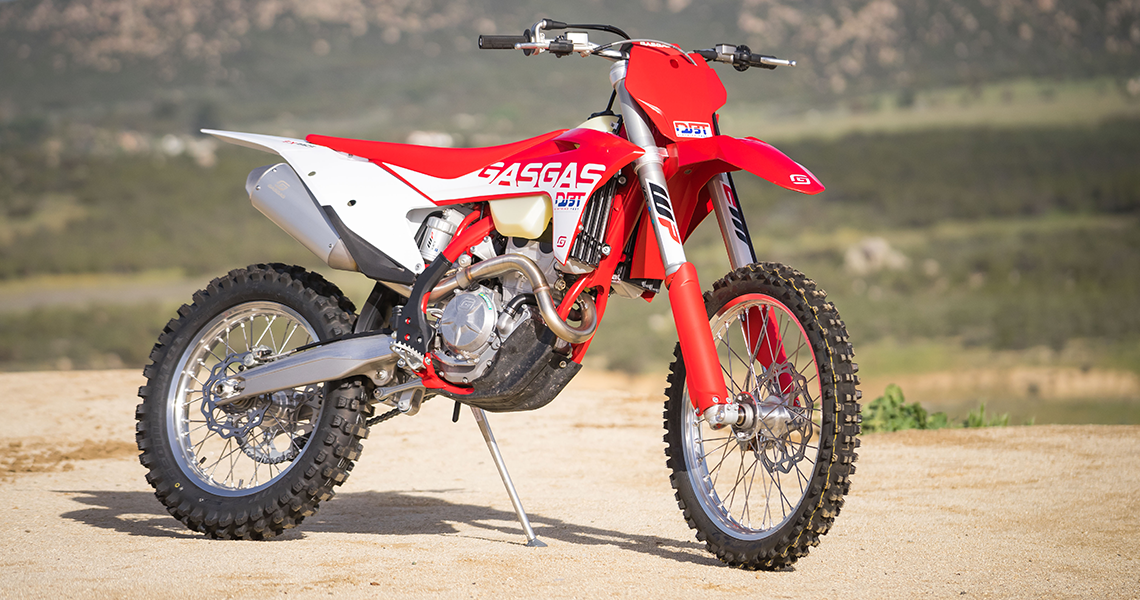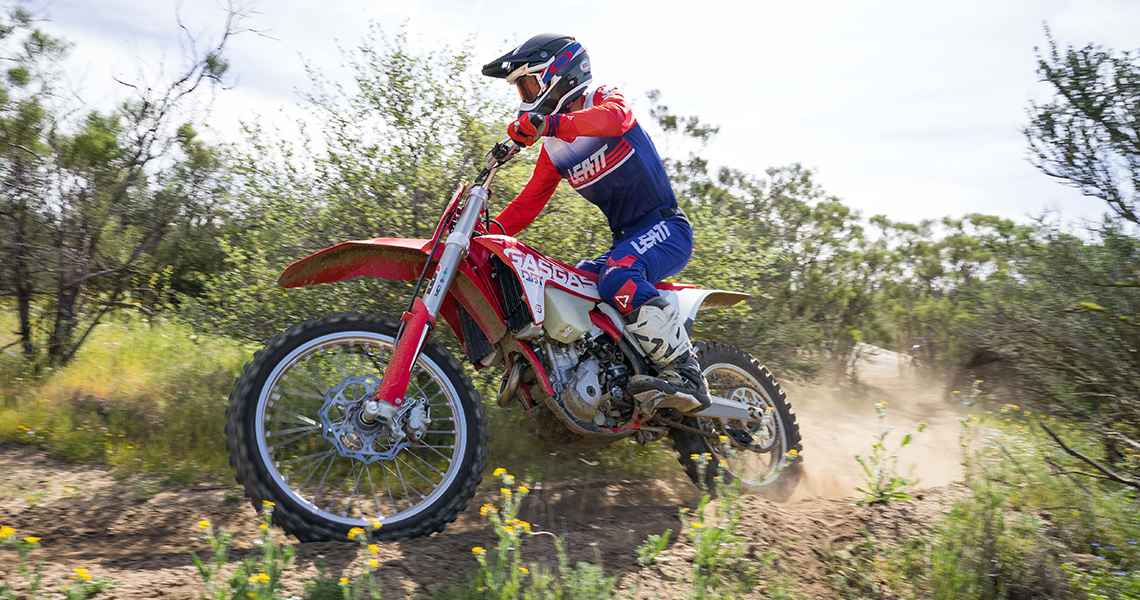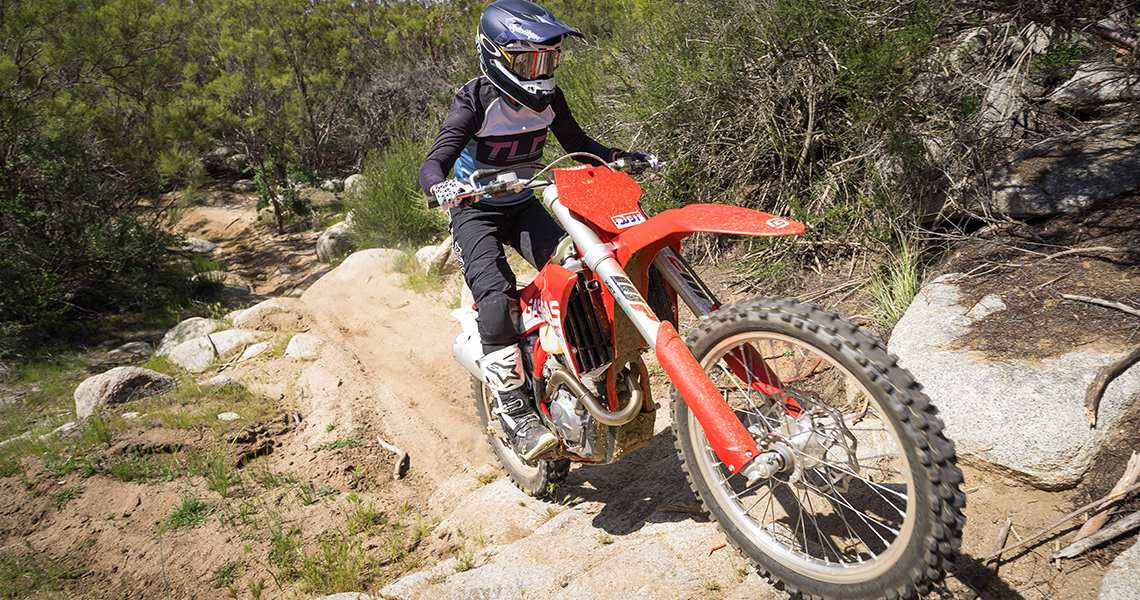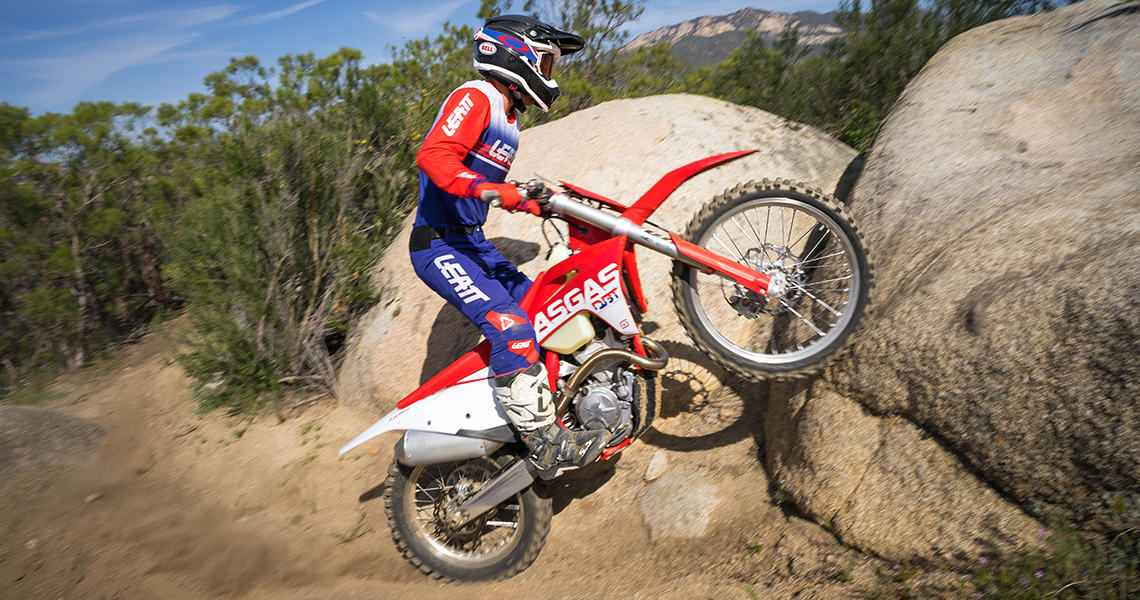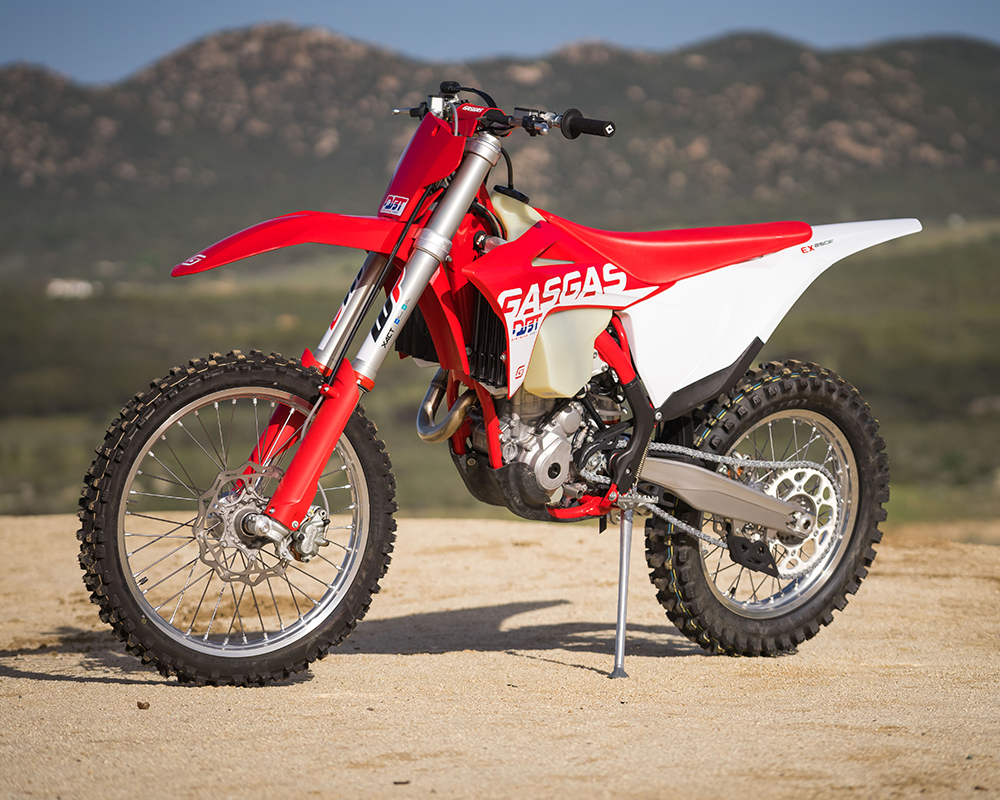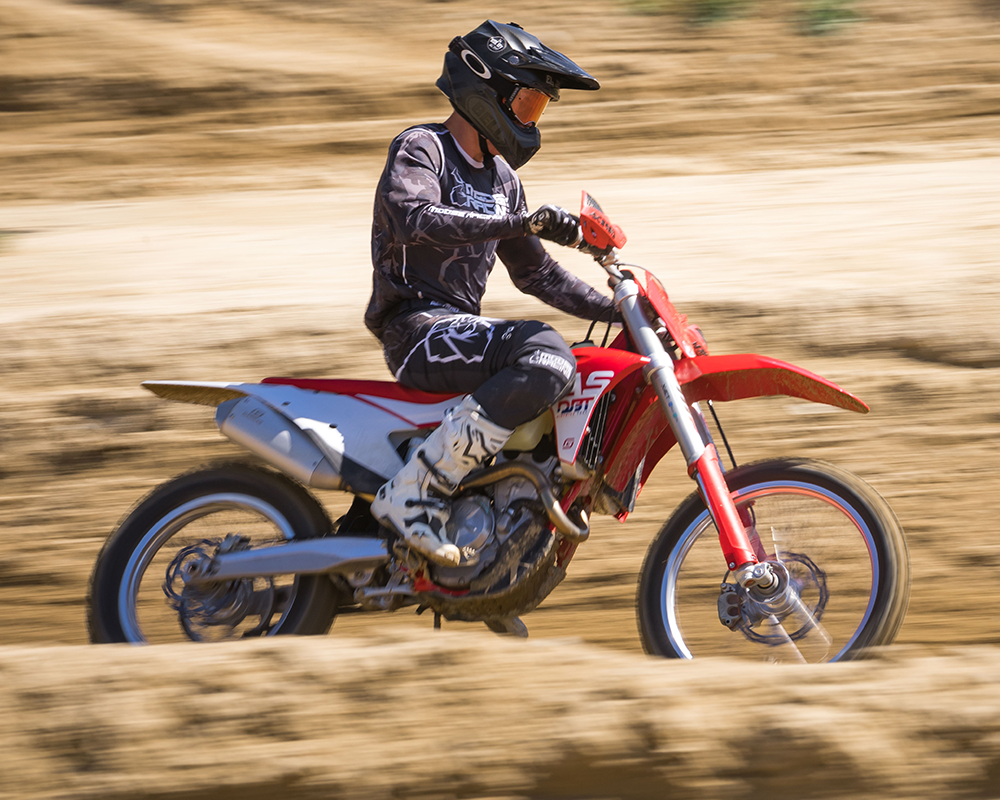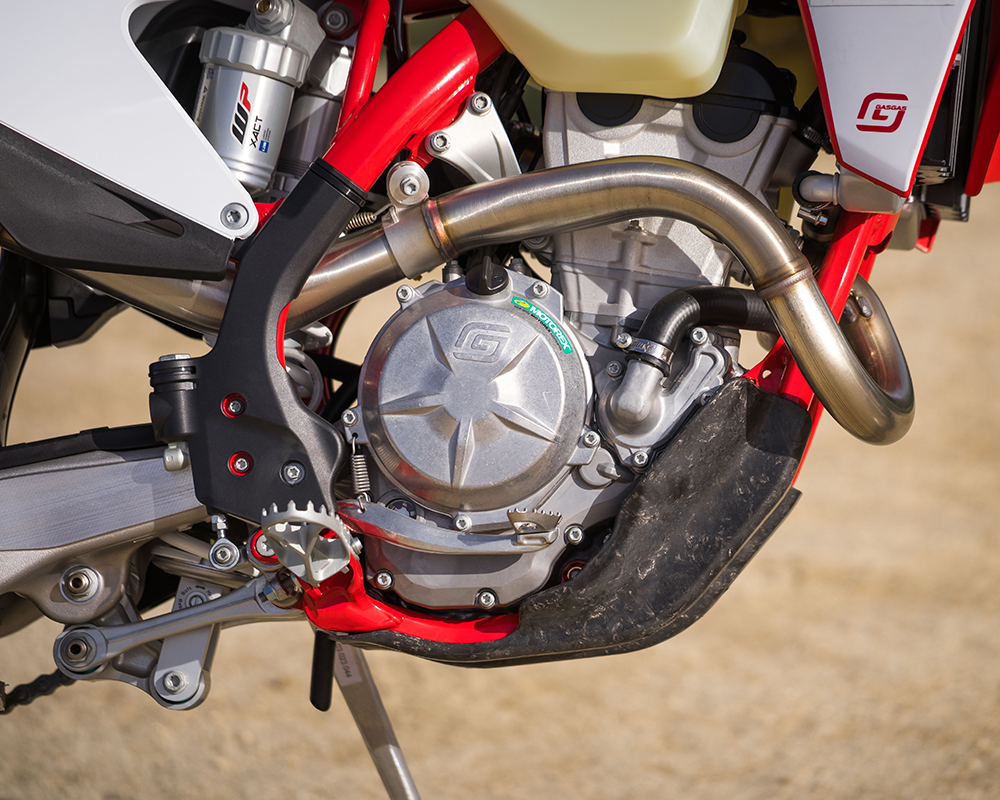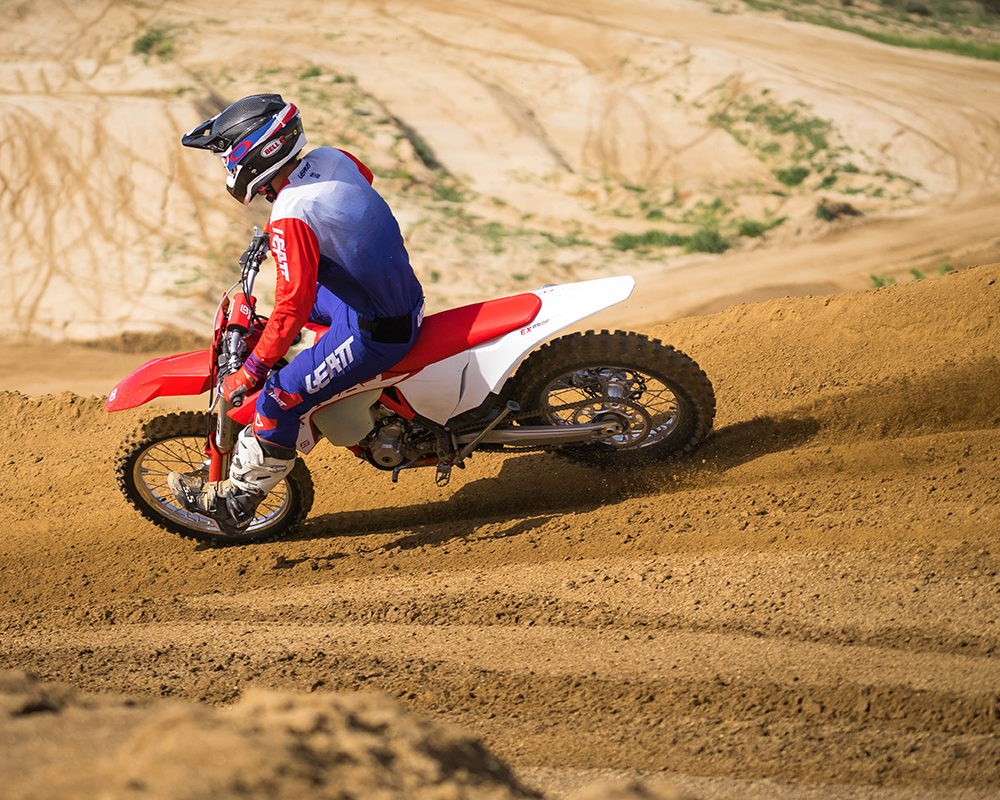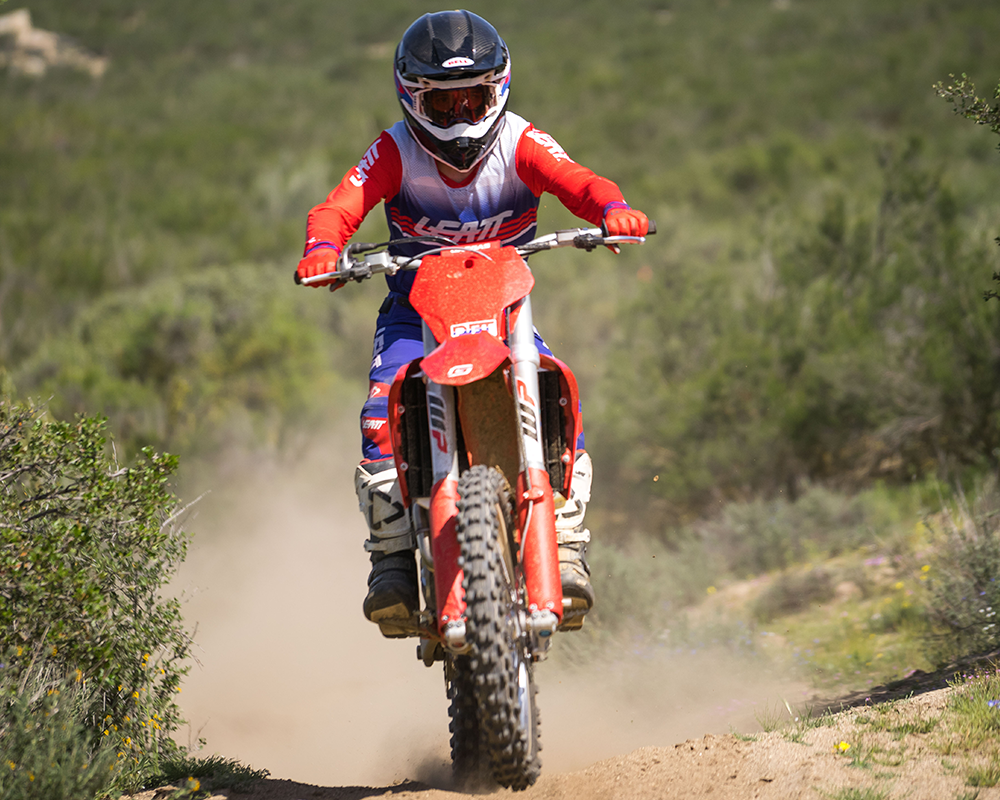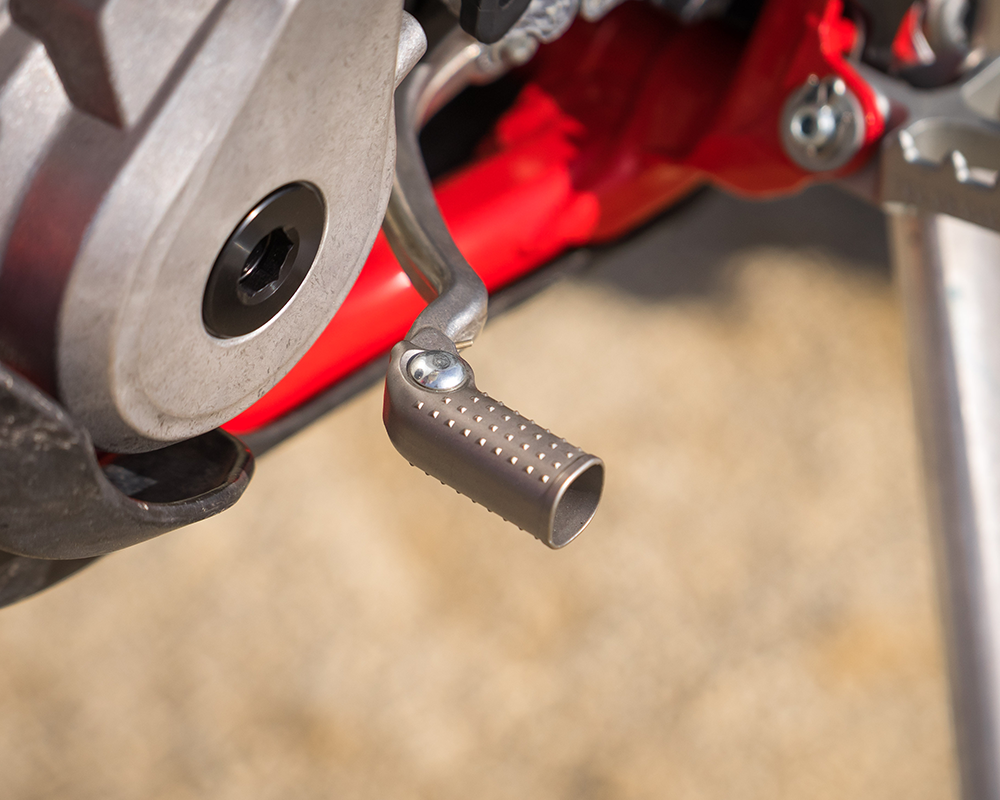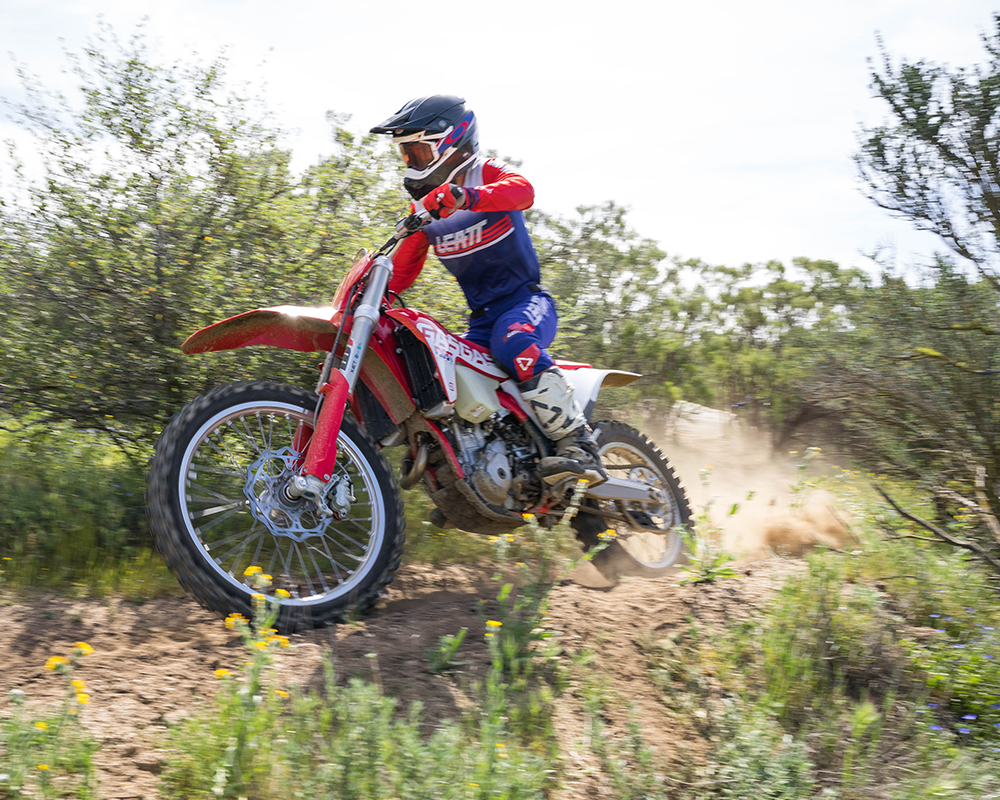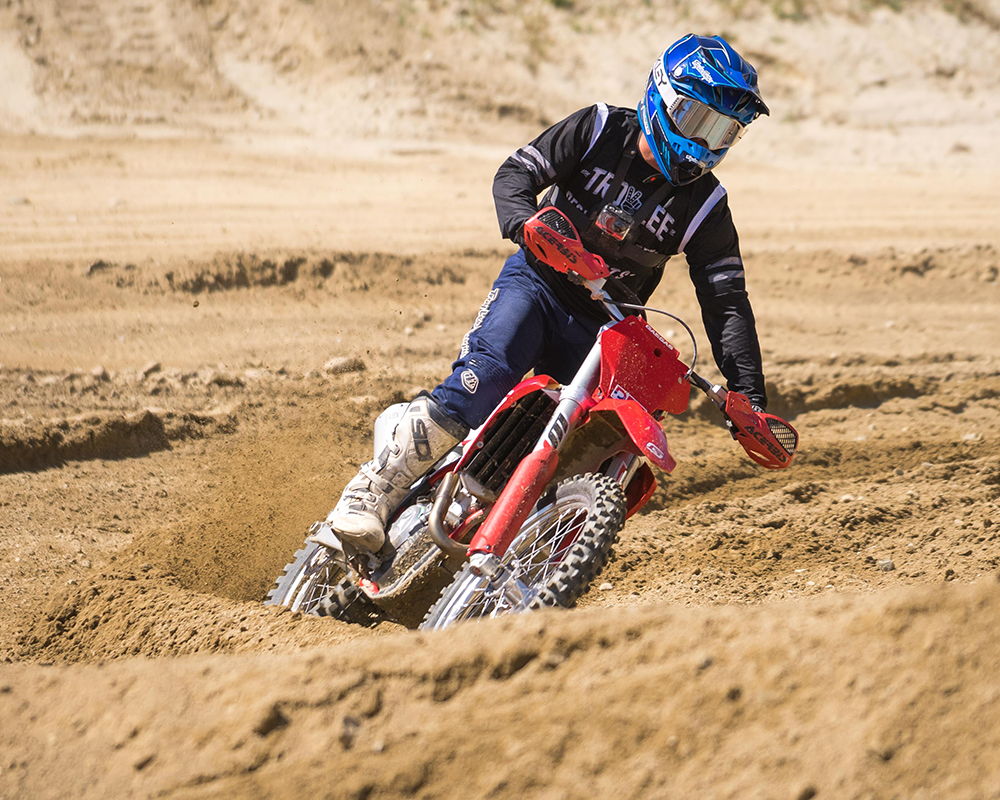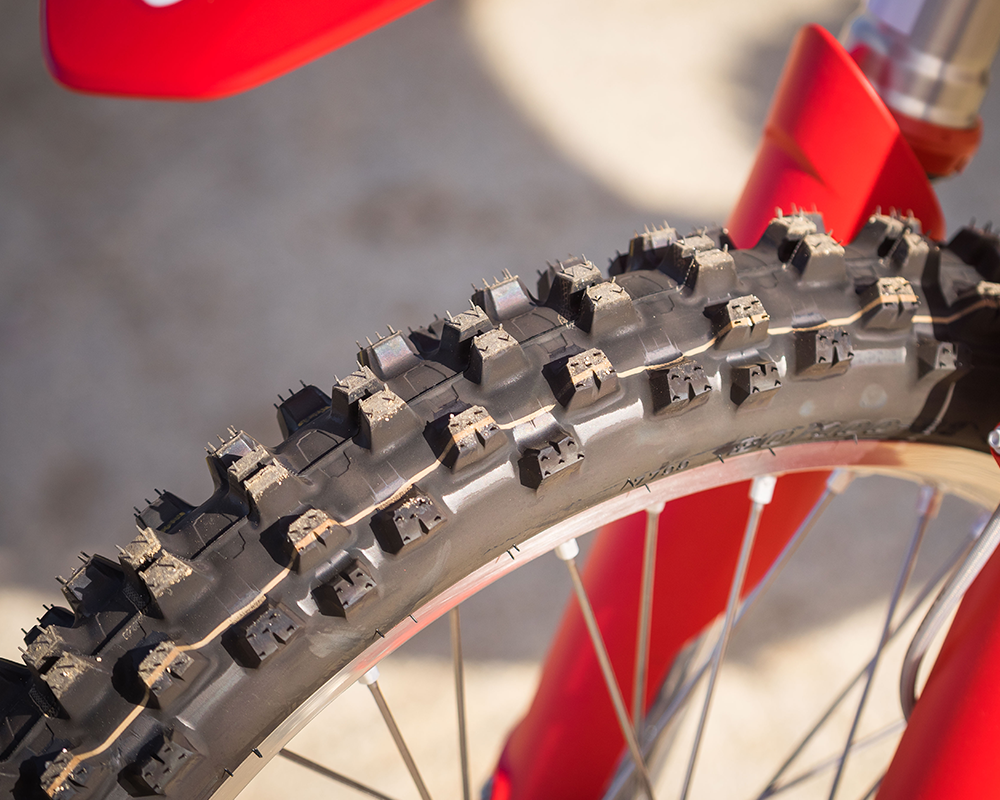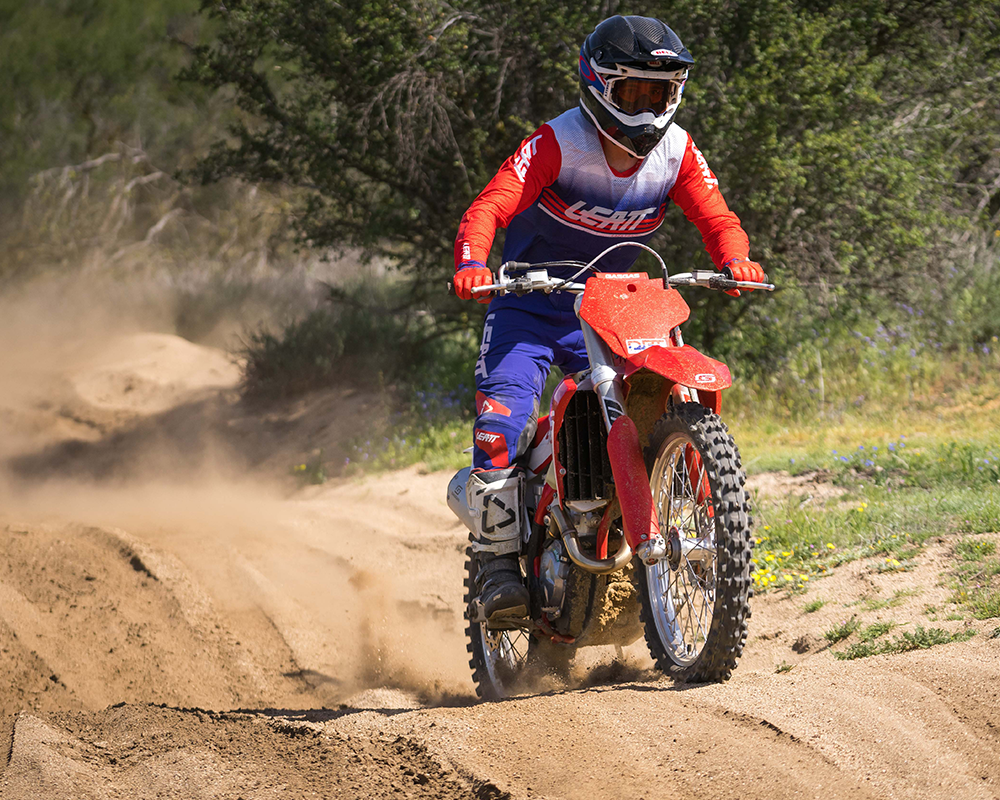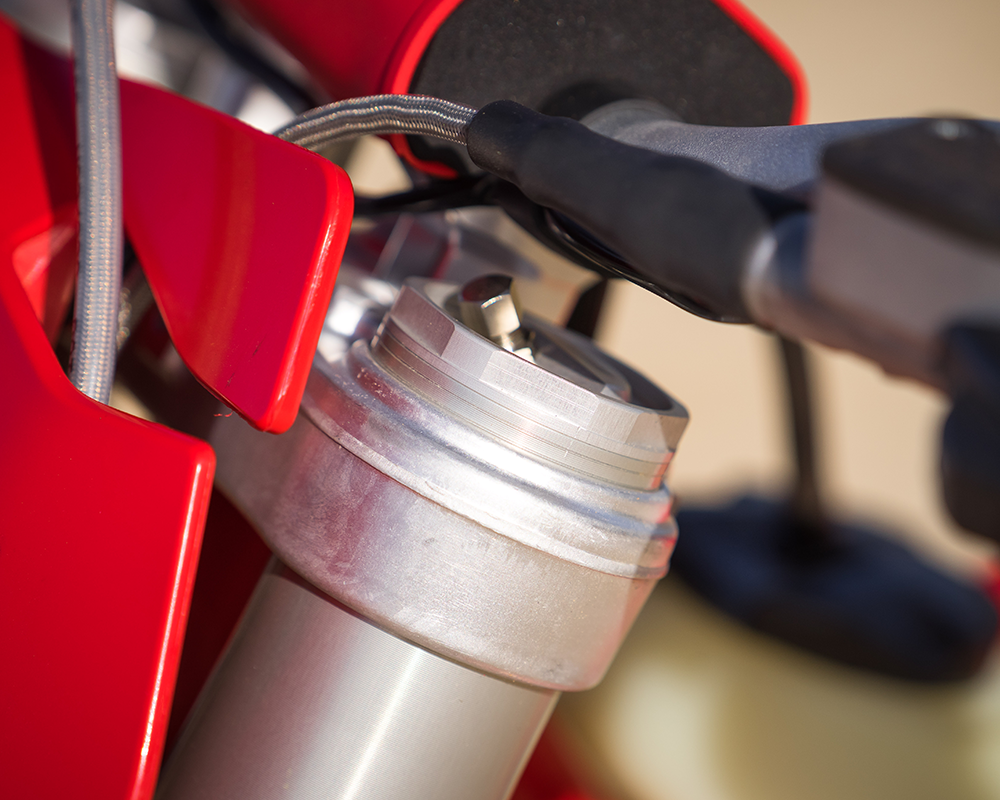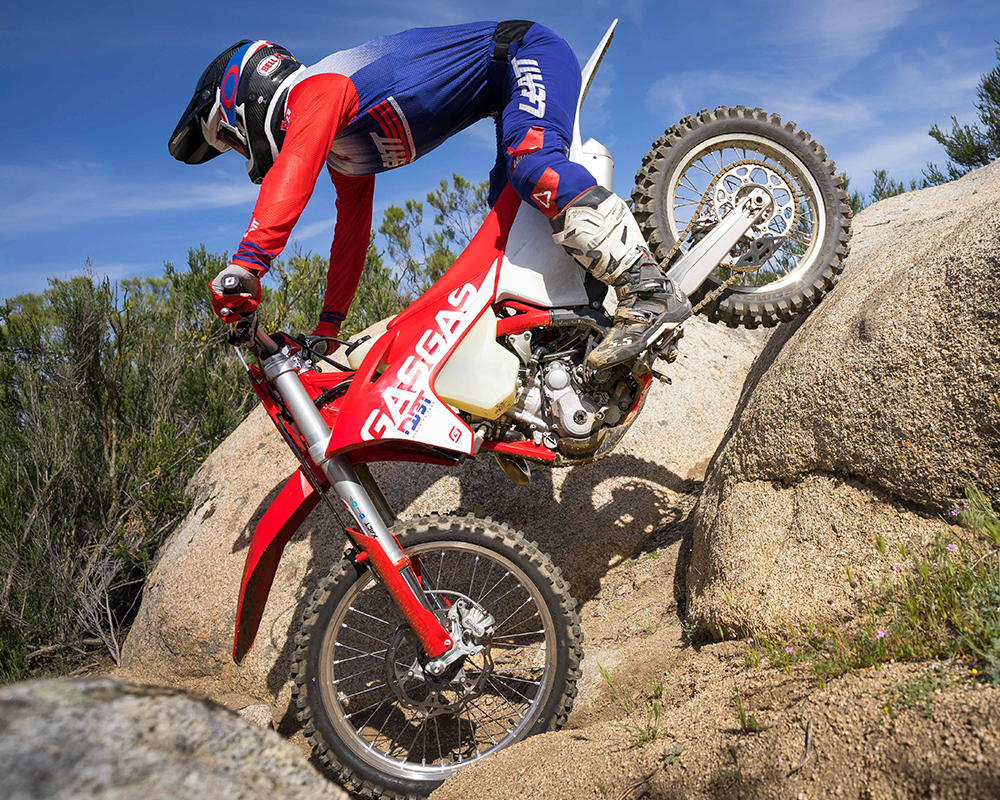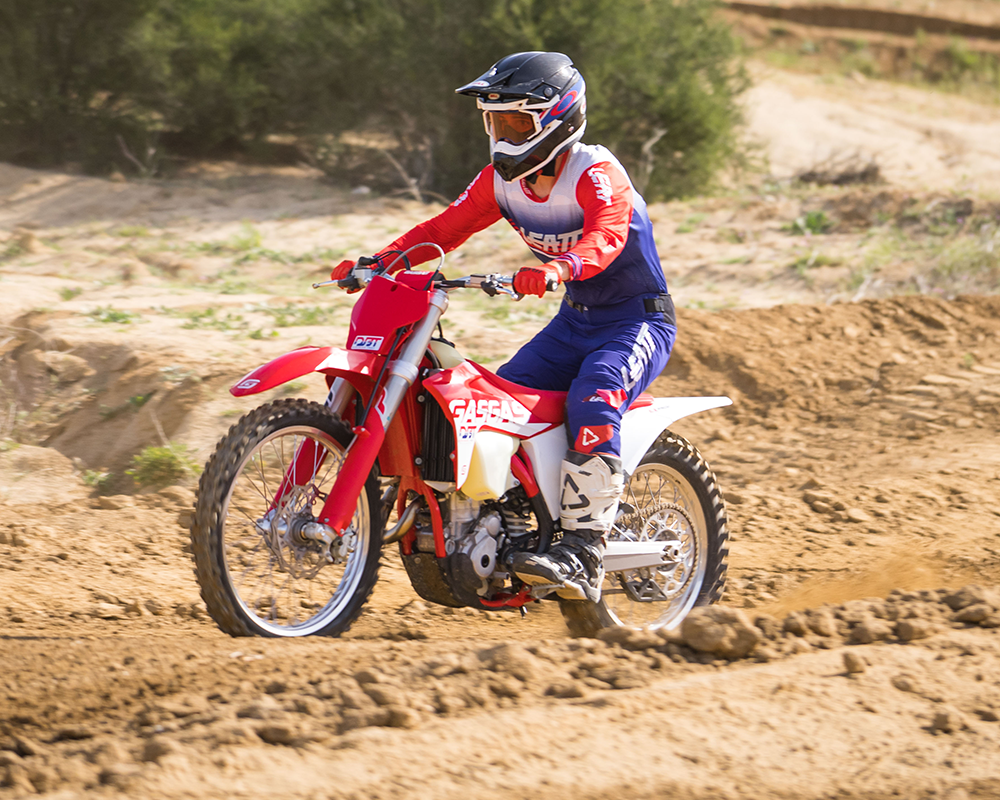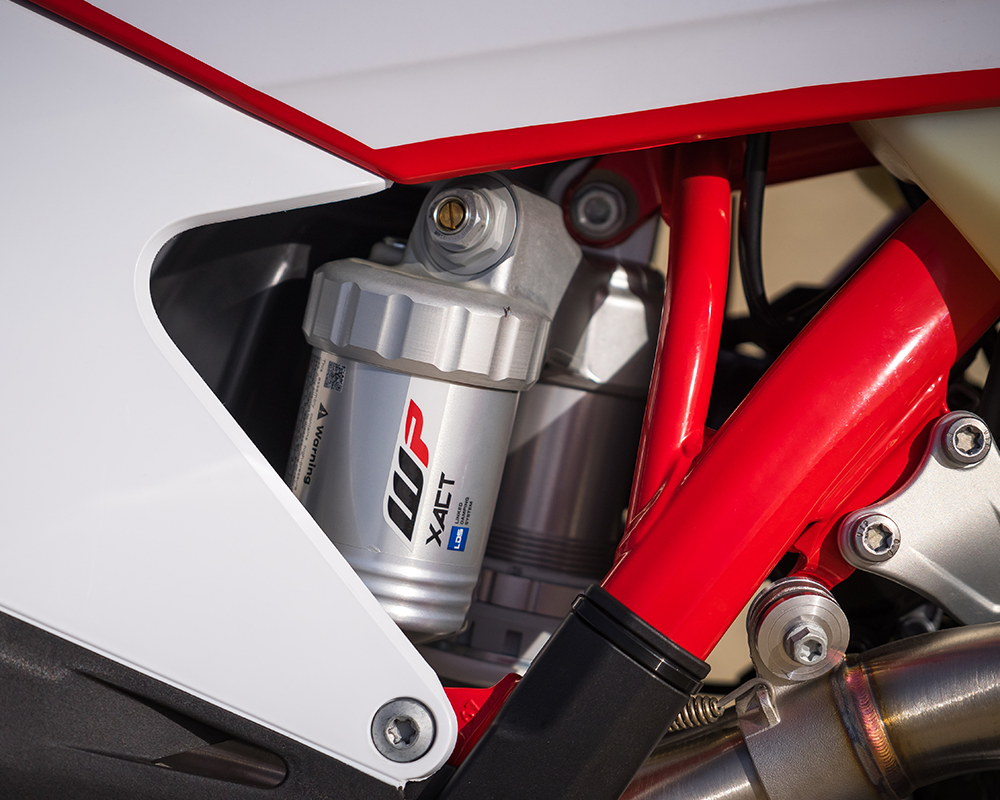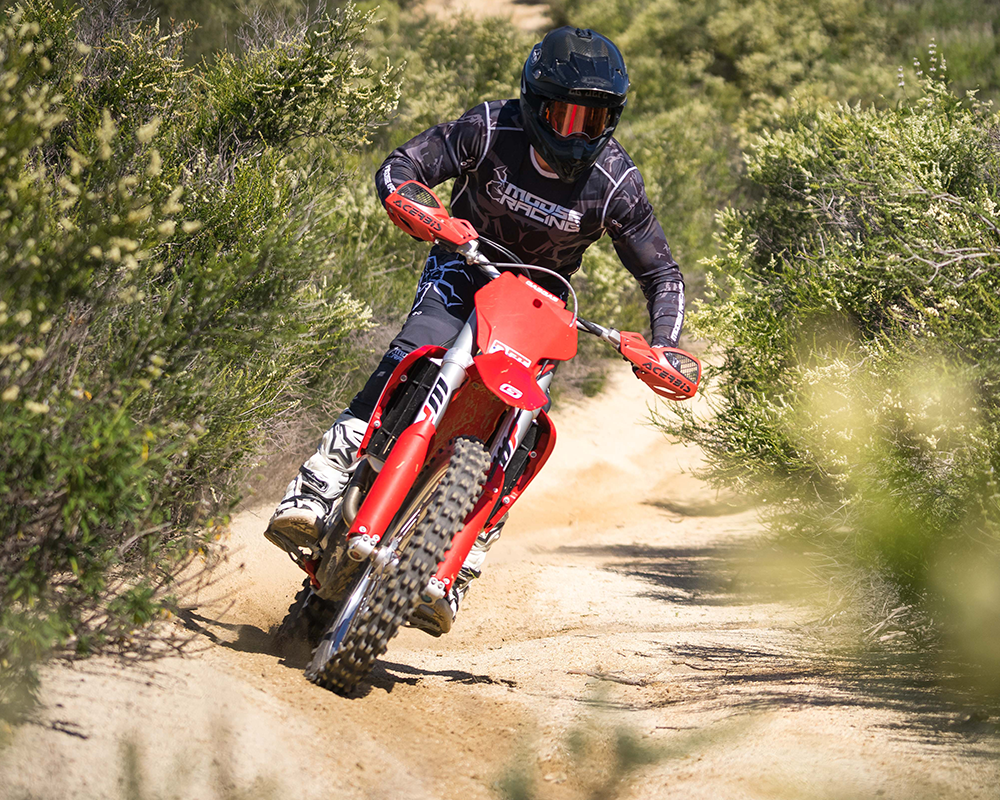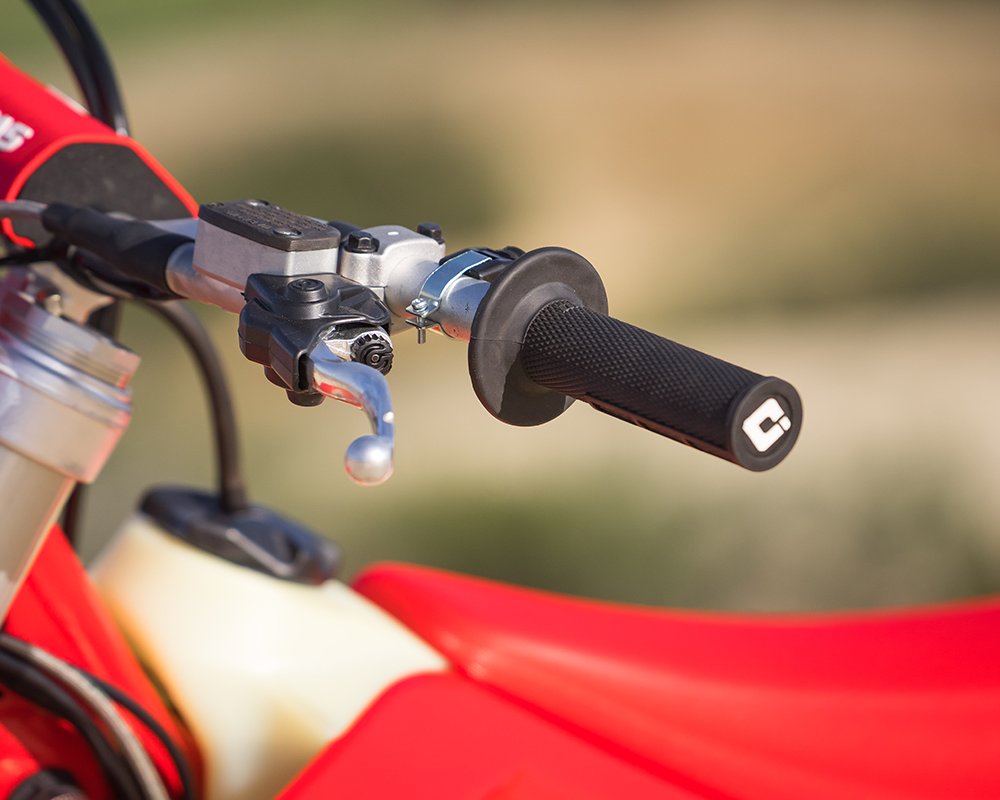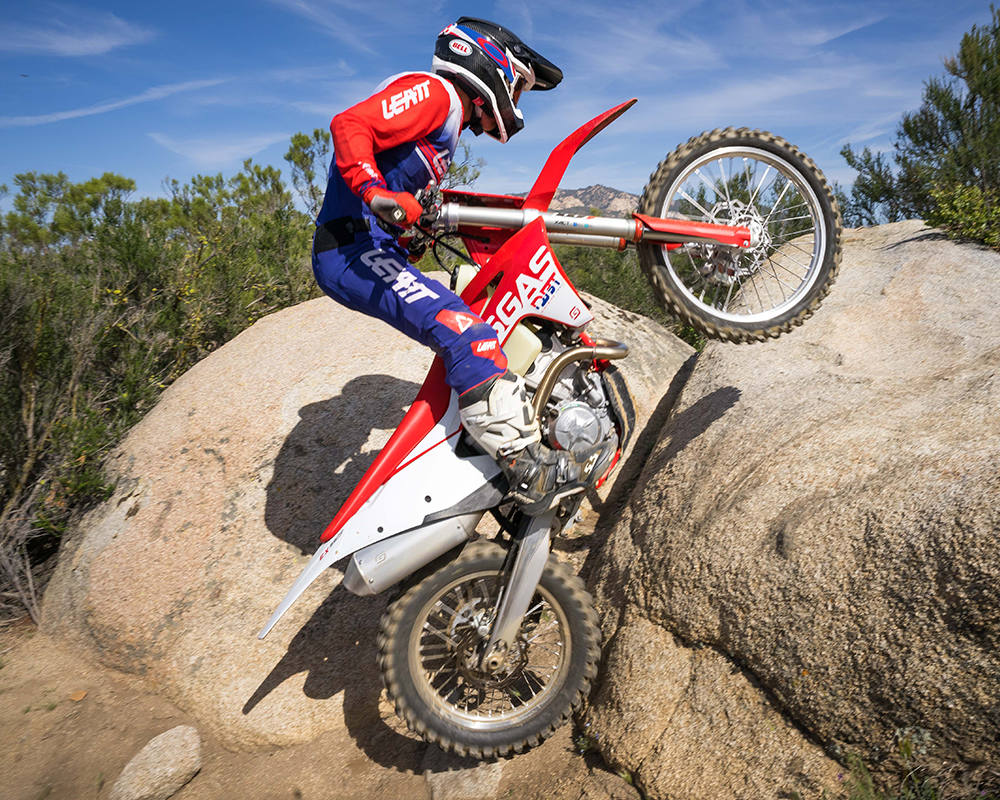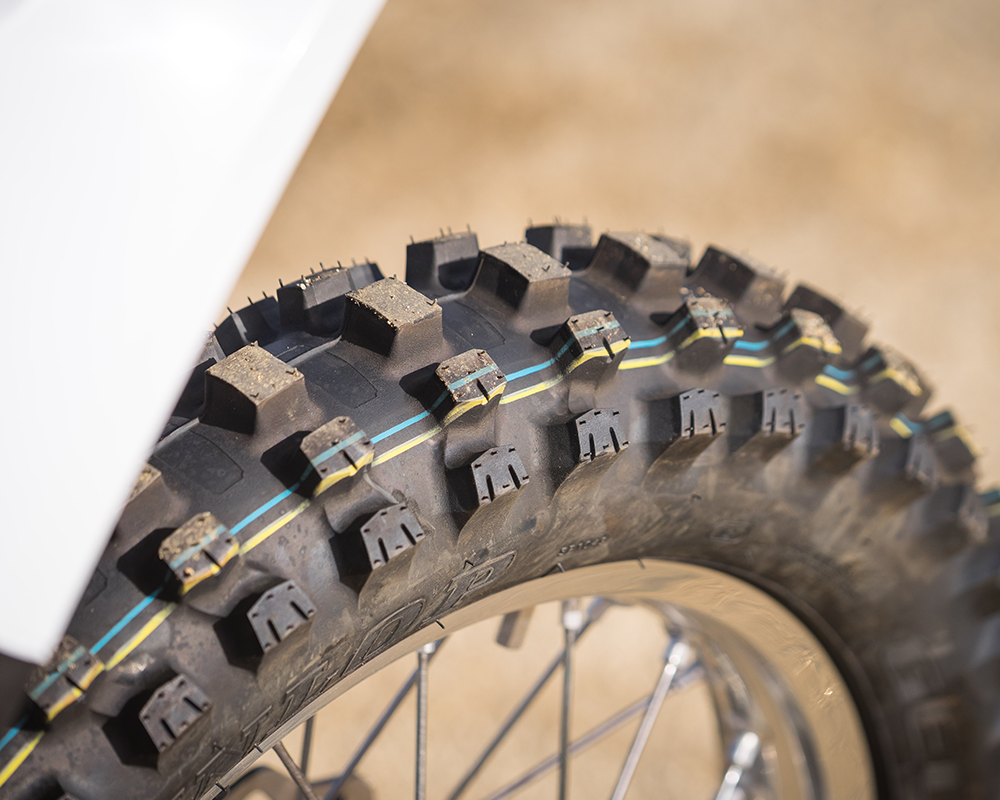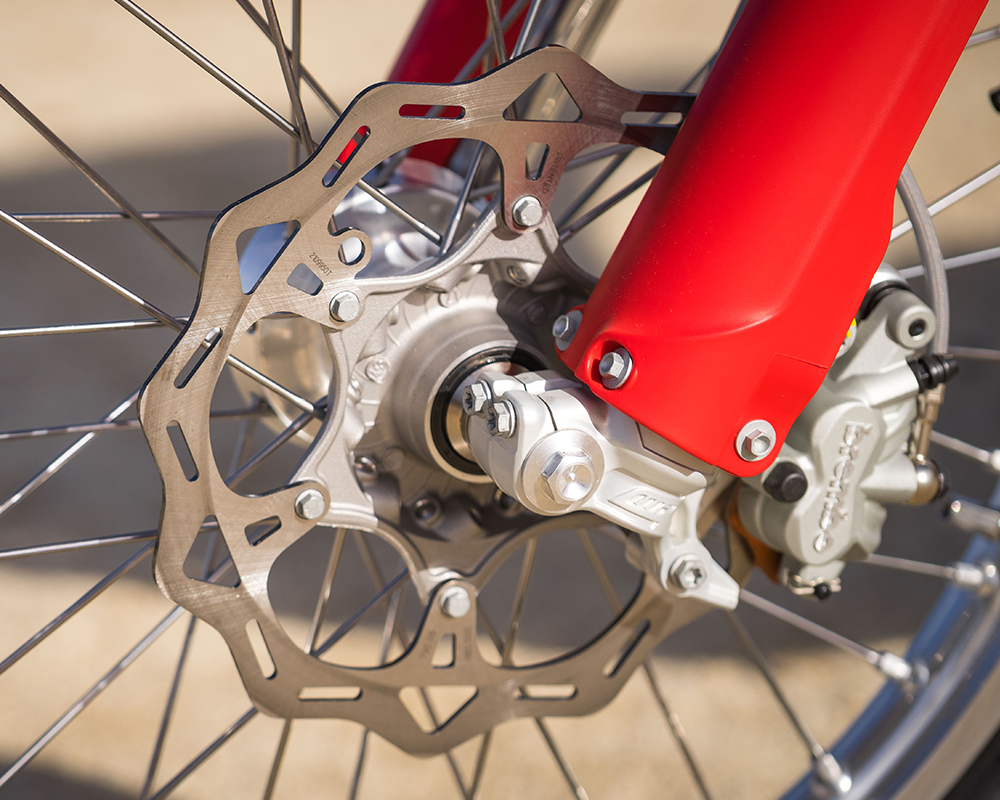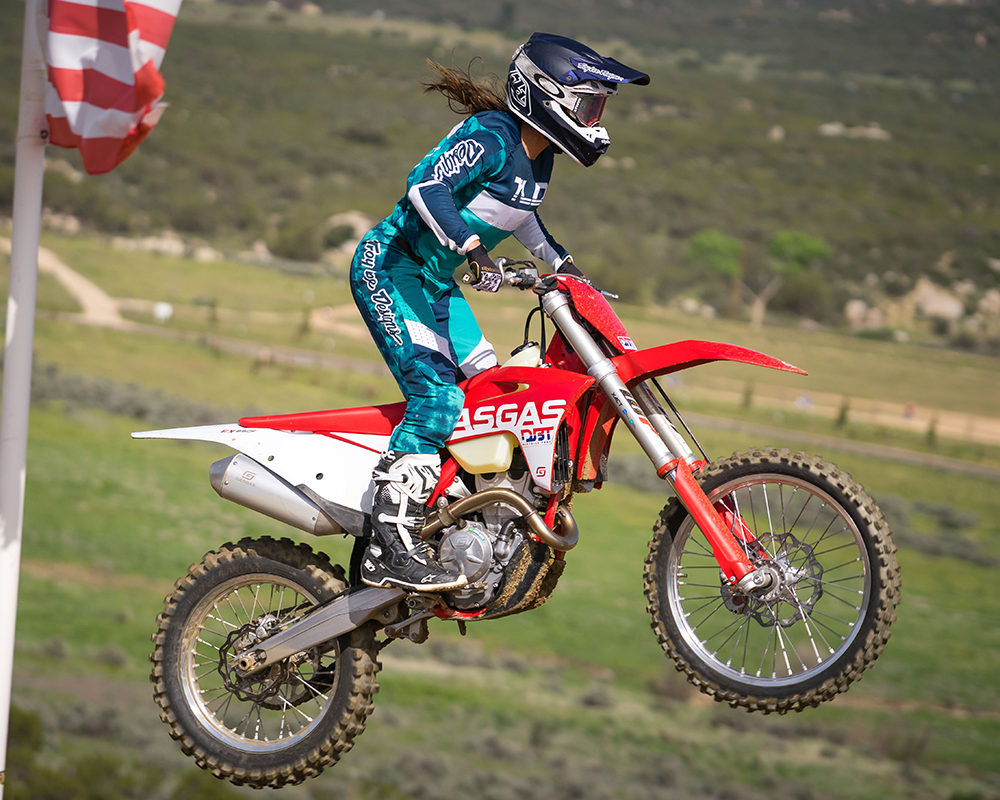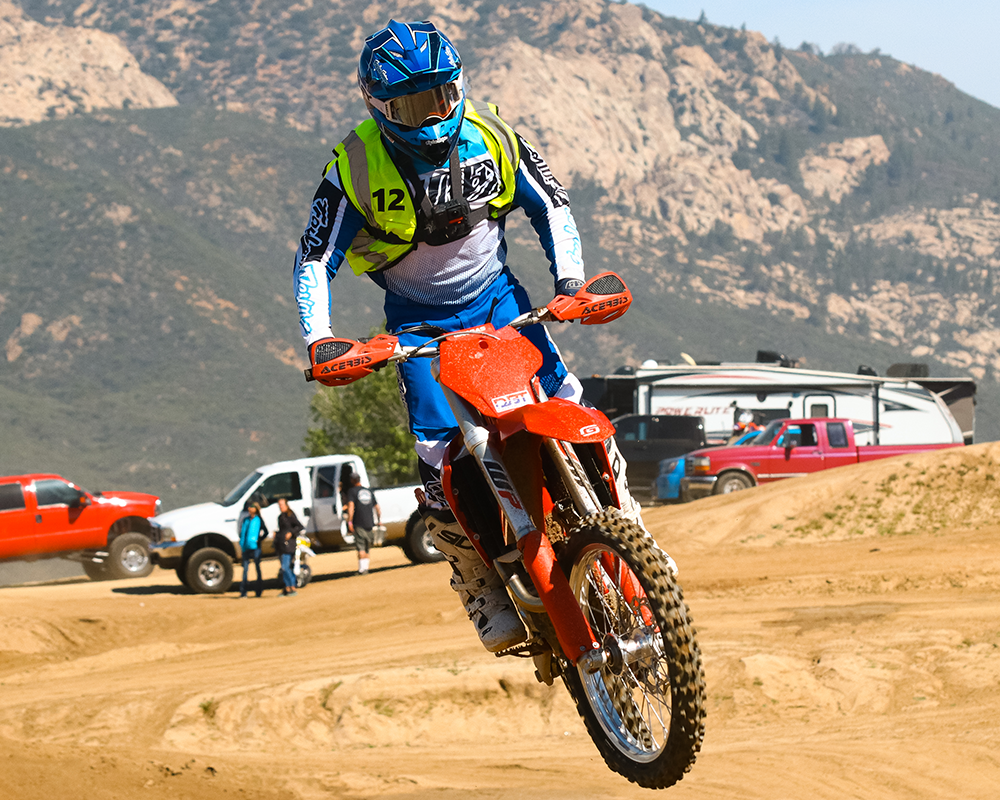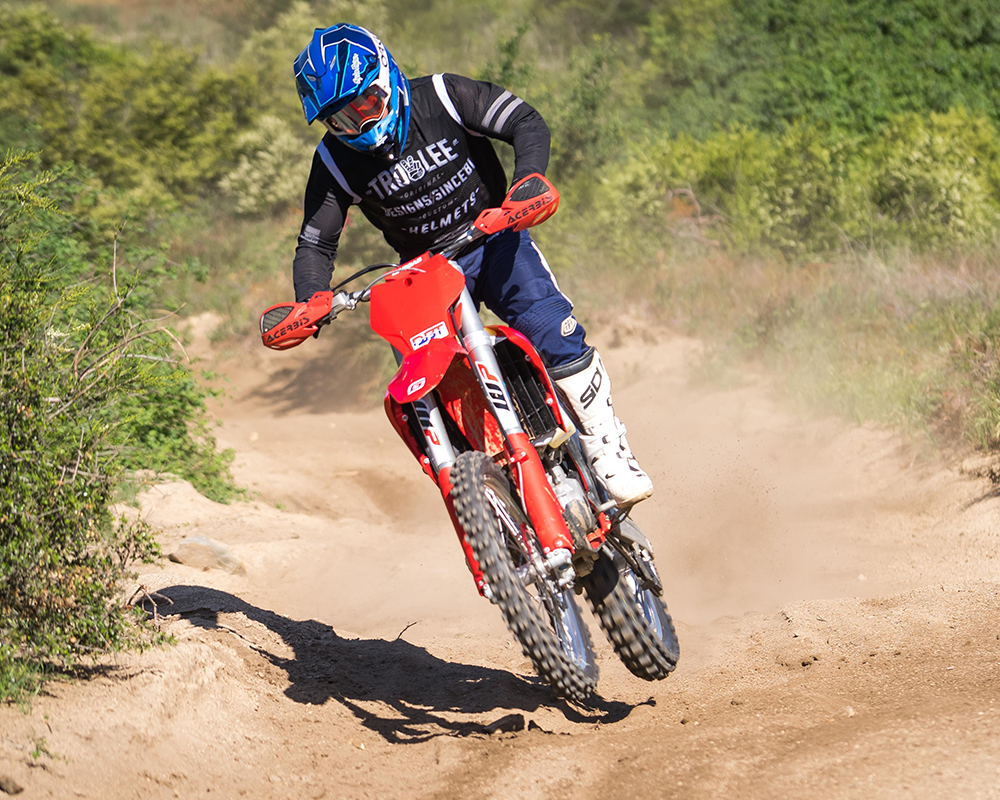2022 GasGas EX250F
Smooth Is Fast
MSRP: $9,499
- Easy to ride bike.
- 6-speed transmission boosts top speed and cruising gear.
- Impressive top-end motor.
- Motor lacks power at times.
- Suspension is on softer side for fast riders and terrain.
Introduction
- GasGas' competition off-road 250F racer.
The EX model range is GasGas’s off-road race platform and the EX250F holds it down in the 250cc classes for the Spanish originated brand. Largely based on the “MC” or motocross lineup, the EX features most of the bare necessities to make it a competitive race bike off the showroom floor. The same bike was piloted to a dominant championship season win last year in the GNCC XC2 class by the likes of Coastal Racing GasGas’s Johnny Girroir.
Changes
- Unchanged for 2022.
For 2022, there are no changes from 2021 and the introduction of the first Austrian produced GasGas’.
Power
- Peak power is way up high in the RPM range.
- Impressive torque in slow speed situations.
- 6-speed transmission.
- No mapping switch or traction control.
The GasGas power is misleading. At first glance, the motor appears as having average power throughout the curve, with just a slight increase near the top. That is until you really spend some time with it and even miss a shift or two. The top end on this bike absolutely rips – quite possibly the best in class. The power starts off smooth down low, connected to the rear wheel but without much pep in its step. Roll the throttle on and you move forward, more than likely without spinning the rear wheel or breaking traction. Although it feels slow and slightly sluggish, it’s deceiving as you’re always driving forward steadily whereas some other bikes feel faster and more aggressive, but don’t put all that power to the ground as effectively. Transitioning into the mid range, it stays linear with no big surges or drop offs.
As you move into the top end, the motor really lets loose and you find the sweet spot. There’s a big surge as the RPMs increase, with another surge as you get real close to the rev limiter. Our rule of thumb aboard this bike when learning where the power is is when you think you need to shift, count to three then shift. There’s a small pocket way up high in the RPM range where most would never think to go, but another boost of power resides. Aggressive and lazy riders alike will find the appeal in this style of power as the need to shift is practically non-existent and high level riders typically ride 250F’s way up high in the RPMs where they should be ridden.
However, the GasGas motor isn’t completely useless down low. It has a lot of torque to it and you can ride pretty tall gears and the motor will keep chugging along and pull you through. Despite its impressive torque that shines in tight trails and technical riding, the bike doesn’t pull fast down low and it doesn’t rev as quick as some of the other 250F’s.
The transmission uses a semi-close ratio 6-speed gearbox with 1-5 being evenly spaced before a large jump up to 6th. The sixth gear feels like one from a wide-ratio tranny plopped into a close ratio five-speed and it’s tough to pull it in most cases, especially with the dependency to rev the bike out. However, it’s nice to have, especially in the desert or trail riding. The hydro clutch works as expected and we’ve gotten very good life out of it.
Suspension
- Softer settings front and rear.
- Air fork is highly adjsutable and tunable.
- Suspension shines with slower riders/speeds.
Production off-road suspension is quite possibly the hardest setting to dial in for an OEM due to the varying needs of east coast vs west coast off-road. Both are so drastically different that you almost need to choose to set up suspension for one or the other, not both. And in the case of the GasGas, it shines in more of an east coast setting where speeds are low and bumps are smaller.
The WP components are softer in nature on the GasGas. The WP AER48 air fork is highly adjustable and is easily tuned to what different riders or conditions demand, but the shock is mainly what it is. Up front, the fork has a firmer feel in the first half of the stroke, but lacks a little progression to keep from bottoming in bigger bumps at faster speeds. Strange because air forks were first known for having exceptional bottoming capabilities. By adjusting fork air pressure and clickers, we were able to minimize bottoming, but it was tough to do so without getting a harsh feeling and causing some uncomfort. Some of the discomfort can be removed by putting better tires on as the AT81’s have a stiffer carcass feeling and don’t help in that small bump compliance that it’s missing.
The shock, much like the fork, is on the soft side for faster riders in faster conditions. It has some wallow to it and bottoms pretty frequently, but it’s somewhat of a controlled bottom. We never had it blow through and rebound dangerously, always more of a controlled release that we could manage. Typical sag ranged from 105-108mm, depending on how much stability is prioritized vs cornering performance.
However, when we took this bike into slower terrain or with more Novice/Intermediate level riders onboard, the bike worked really well. The plush settings offer comfort and predictability with small bumps, rocks, roots, etc and tracks well, finding traction when it isn’t always abundant. With some simple revalving that suits our faster conditions and riders more, we feel we could get this bike working much better.
Chassis - Handling
- Good mix of stability and precision.
- Lightweight feeling on the trails.
- Well-made machine from top to bottom.
The scale weight certainly is felt on the trails with the GasGas. It’s light, nimble, agile, and easily flickable when you want it to be. This is good and bad depending on the situation at hand. Like the suspension, this reaps rewards when speeds are down and the bike is constantly changing directions. However, when the speeds increase, the light scale weight and lightweight air forks tend to dance around across the bumps instead of plowing through them. Those who favor more stable bikes noticed this at speed, but if the bike did get out of line, its lightweight was easy to pull back in. Its versatility and mix of stability vs precision is very good, it just shines in the precision department a little bit more than in the stability sector. The steel chassis, paired with softer suspension, offers comfort on the trails that is tough to match with the other 250F XC offerings
The cockpit is easy for most to get along with with everything being fairly neutral and nothing standing out in a good or bad way. The Brembo brakes are superb, and the hydraulic clutch works well as expected.
Maintenance is easy on this bike. Air filters can be changed tooless in seconds, oil is simple, and nearly every bolt makes sense and is easy to get to. Durability is also very good on this machine. We know of high level off-road racers that have gone 100+ hours without touching the motor other than oil and checking the valves, though they never needed adjusting.
Conclusion
- The "cheaper" Austrian racer.
This bike has been more polarizing than most amongst our testers, but we feel it’s a bike that can take longer to adapt to and figure out setup more than some of the others – that is only if you don’t adapt right away. The motor has a lot of potential when ridden correctly, the suspension is of good quality and highly adjustable, and the overall chassis is proven.
It is significantly cheaper than KTM’s 250 XC-F that has a very similar platform, yet performs very good. It doesn’t have a mapping switch, although once we found the map we liked on a KTM, we never changed it. Despite some of the "cheaper" parts that are outfitted, the bike performs for fast and slow riders alike. And although we say this bike has "smooth" power and "soft" suspension, sometimes smoother is faster. This bike, like most every other bike we test these days, is really good and certainly has its place in the market.
Recent Product Tests
Leave a Reply
